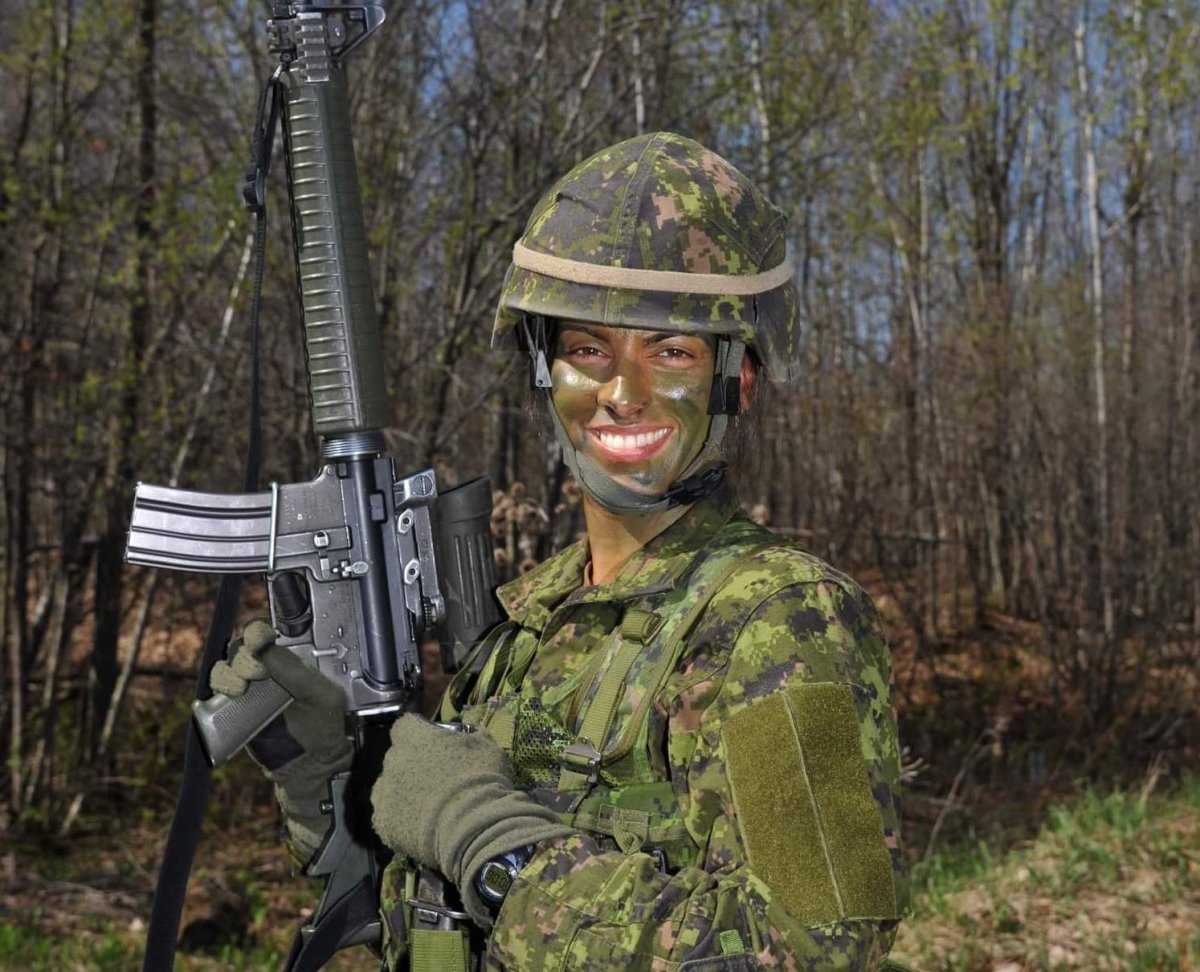The Canadian Armed Forces are struggling to hit their own targets to get more women, Indigenous people and visible minorities into uniform, new data obtained by Global News shows.

And, in an attempt to to boost numbers that appear to have been largely stalled for more than three years, the Department of National Defence (DND) will launch a suite of new digital tools — including a smartphone app that, in its functionality, will resemble the matchmaking app Tinder — aimed at convincing more Canadians to consider a life in the Armed Forces.
The Canadian Forces believes a more diverse group is also a more effective group.
“It’s important in that it gives us operational effectiveness,” Brig.-Gen. Virginia Tattersall said in an interview. “If we were all that one sort of vanilla, you won’t get that same range of opinions, those different ways of being able to think about issues, that different approach to how to solve a problem.”
The Canadian Forces says that, as of the most recent fiscal year-end, on March 31, 2018, just 15 per cent of the regular force were women, a ratio that’s hardly budged since 2016 when it was 14.4 per cent. DND’s own target is to push that ratio to 25 per cent by 2026.
- ‘Shock and disbelief’ after Manitoba school trustee’s Indigenous comments
- Canadian man dies during Texas Ironman event. His widow wants answers as to why
- Several baby products have been recalled by Health Canada. Here’s the list
- ‘Sciatica was gone’: hospital performs robot-assisted spinal surgery in Canadian first
One new female recruit, army Capt. Mandy Grewal, joined the Canadian Forces in the spring at the age of 34. She had been a practising private-sector lawyer and had never considered a career in uniform when she was growing up.
“It was never a career that was presented to me growing up as an Indian female,” Grewal said in an interview.
But through some friends who were in the Forces, Grewal learned about life in uniform and found out she could continue practising law and have the chance to work overseas and in different parts of Canada. She believes more women and visible minorities might consider making the same choice she did if they knew more the sorts of trades the military is seeking.
“I think that greater awareness of the career opportunities, of the fact that there are pretty much every trade that you would have in the civilian world, you can practise and you can also learn to do it in the military context,” said Grewal.
Tattersall acknowledged that one barrier to recruiting more women has been the perception that the Armed Forces did not do enough to prevent inappropriate sexual behaviour, that women were putting themselves at risk in a culture that often overlooked that kind of behaviour.
Tattersall said the department has spent considerable time thinking about how to convince Canadians to join the forces.
Among the new initiatives set for this fall, the Forces hope to launch a program that lets Canadians sign up on a temporary basis, to get a taste of life in uniform, in the hope that they will enjoy the experience and make a career commitment.
There will soon be a revamped website which will include some virtual reality tours. And there will be a smartphone app that lets potential recruits explore some of the hundreds of different trades or occupations within the Forces by swiping right for those they like and swiping left for those they don’t.
“We are really upping our game so that we are going to approach young people just like any other modern company would think of,” Tattersall said.
DND is closer to hitting its self-imposed targets for visible minorities and Indigenous Canadians although, as with the ratio of female regular Force members, the numbers have not budged much over three successive years.
At the end of fiscal 2018, visible minorities made up 7.2 per cent of the regular Forces versus 6 per cent in 2016. The 2026 target is 11.8 per cent.
The 2026 target for Indigenous Canadians is 3.5 per cent and at the end of fiscal 2018, the regular Forces were at 2.8 per cent versus 2.7 per cent in 2016.
That data was provided to Global News by DND after Global News obtained a briefing note prepared last March for Defence Minister Harjit Sajjan that outlined some of the human resources challenges facing the department.
For example, the department would like to lower the attrition rate of the forces. At the end of fiscal 2018, the forces were losing about 4.1 per cent of its members — both regular and reserve — a year. In fiscal 2017, the attrition rate spiked to 7.9 per cent. That spike, according to the briefing note prepared for Sajjan was a result of the clearing of a backlog of medical releases.
There are about 66,000 regular Force members and about 27,000 reserve Force members. The Trudeau government’s goal is to boost that to 71,500 regular Force members and 30,000 reservists. A high attrition rate makes it more difficult for the Forces to achieve those goals.
In fiscal 2018, the department spent $6.575 million on its recruiting advertising campaign which included the purchase of $1.365 million worth of television advertising which ran on CBC in French and in English during the Olympics.





Comments